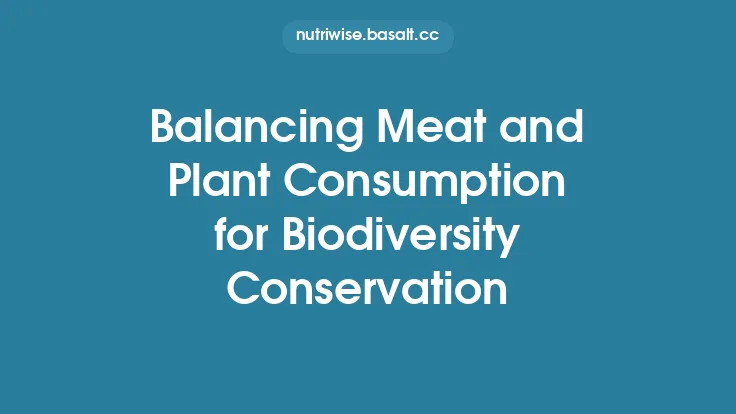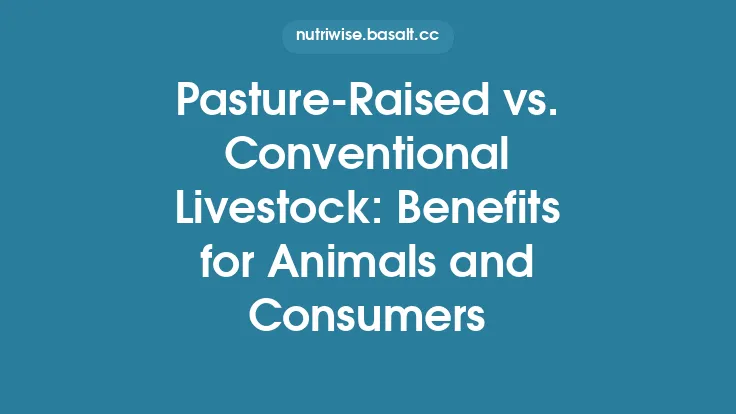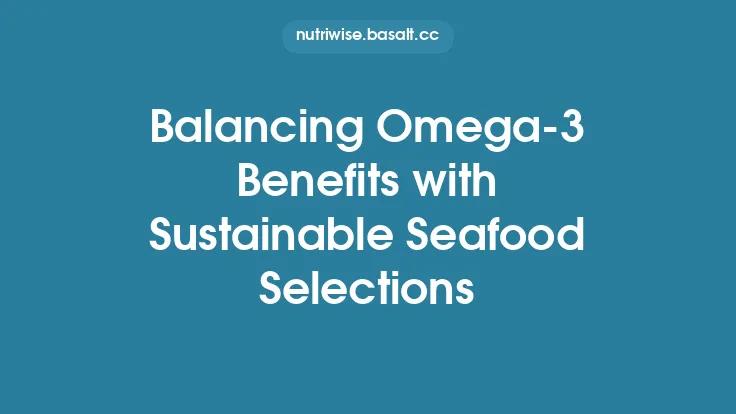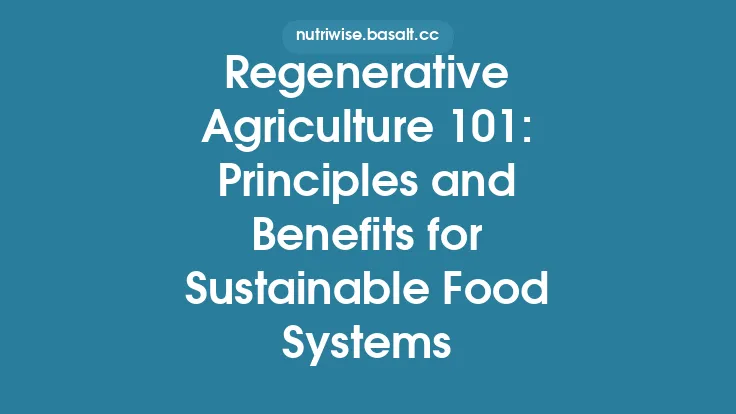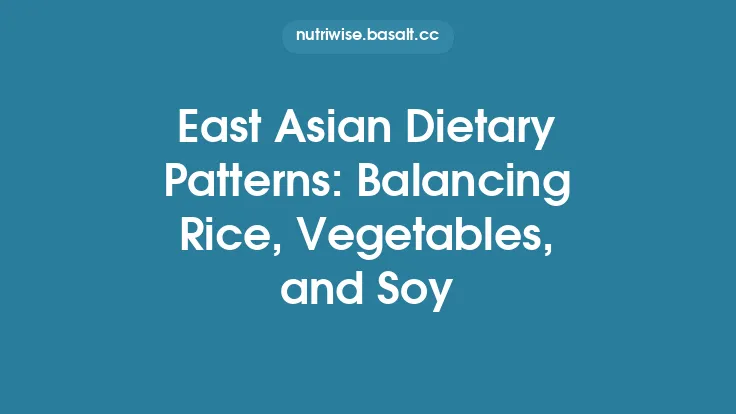Sustainable grazing management sits at the intersection of animal welfare and land stewardship, offering a pathway to produce protein while preserving—and even enhancing—the ecosystems on which both livestock and humans depend. By aligning herd behavior with the natural rhythms of grasslands, ranchers can meet the nutritional needs of animals, protect soil structure, foster biodiversity, and contribute to climate resilience. This article explores the core concepts, practical techniques, and emerging tools that enable producers to balance animal health with land health over the long term.
Understanding Sustainable Grazing Principles
Sustainable grazing is more than simply moving animals from one paddock to another; it is a systems‑based approach that considers the biological, physical, and socio‑economic dimensions of a rangeland operation. The guiding principles include:
- Carrying Capacity Alignment – Matching the number of animals to the productive potential of the land, expressed as animal unit months (AUM) per hectare, to avoid overgrazing and underutilization.
- Temporal Distribution of Grazing Pressure – Spreading forage utilization across the growing season to allow plants to complete their phenological stages (leaf expansion, tillering, seed set).
- Spatial Heterogeneity – Maintaining a mosaic of grazed and ungrazed patches that supports a range of plant species and microhabitats.
- Feedback Loops – Using real‑time observations of plant vigor, soil moisture, and animal condition to adjust stocking rates and grazing intervals.
When these principles are consistently applied, the grazing system becomes a regenerative process rather than a consumptive one.
Rotational and Adaptive Grazing Systems
1. Traditional Rotational Grazing
Dividing a pasture into multiple paddocks and rotating livestock on a fixed schedule allows forage to recover. Key variables include:
- Rest Period Length – Determined by plant growth rates, which are influenced by temperature, precipitation, and soil fertility.
- Stocking Density per Paddock – Higher densities for short, intense grazing periods can stimulate tillering in many grass species, provided the rest period is sufficient.
2. Managed Intensive Rotational (MIR) Grazing
MIR intensifies the rotational concept by using smaller paddocks and shorter grazing intervals (often 1–3 days). Benefits include:
- Uniform Defoliation – Reduces selective grazing that can favor unpalatable species.
- Enhanced Soil Contact – Frequent trampling distributes manure evenly, improving nutrient cycling.
3. Mob Grazing
A high‑intensity, short‑duration grazing event (often <24 hours) where a large herd moves continuously across a large area. The technique mimics the natural foraging behavior of wild ungulates and can:
- Promote Deep Root Development – By encouraging rapid leaf removal, plants allocate more carbon belowground.
- Suppress Invasive Species – The intense pressure can outcompete opportunistic weeds that are less tolerant of heavy grazing.
4. Adaptive Multi‑Scale Grazing (AMSG)
AMSG integrates multiple grazing scales—ranging from fine‑scale paddock rotation to landscape‑level seasonal migrations—based on ongoing monitoring. Decision points are adjusted according to:
- Remote Sensing Indicators (e.g., NDVI trends).
- Soil Compaction Sensors (e.g., penetrometer readings).
- Animal Performance Metrics (e.g., average daily gain, body condition scores).
By coupling these tools with a flexible management plan, producers can respond to climatic variability and avoid the pitfalls of static grazing schedules.
Soil Health and Carbon Sequestration
Healthy soils are the foundation of productive grazing lands. Sustainable grazing influences soil health through several mechanisms:
- Organic Matter Input – Manure and urine deposit labile carbon and nutrients directly onto the soil surface, stimulating microbial activity.
- Root Exudation – Defoliated plants allocate more photosynthate to root growth, increasing root biomass and the associated rhizosphere carbon pool.
- Soil Structure Improvement – Repeated, moderate trampling encourages the formation of stable aggregates, enhancing porosity and water infiltration.
Quantitatively, well‑managed grazing systems can sequester 0.2–0.5 t C ha⁻¹ yr⁻¹, with higher rates reported in semi‑arid rangelands where grazing stimulates deep root growth. To maximize sequestration, managers should:
- Maintain Continuous Ground Cover – Avoid bare patches that accelerate erosion and carbon loss.
- Limit Soil Compaction – Rotate livestock away from wet soils and use controlled traffic patterns.
- Incorporate Leguminous Forage – Species such as alfalfa and clover fix atmospheric nitrogen, reducing the need for synthetic inputs and enhancing organic matter accumulation.
Biodiversity Conservation through Grazing Management
Grazing, when applied judiciously, can be a powerful tool for preserving and enhancing biodiversity at multiple trophic levels:
- Plant Community Diversity – Rotational grazing creates a shifting mosaic of grazing intensities, allowing both grazing‑tolerant and grazing‑sensitive species to coexist.
- Pollinator Habitat – Periodic rest periods enable flowering forbs to bloom, providing nectar and pollen resources for bees, butterflies, and other pollinators.
- Ground‑Nesting Birds – Maintaining short‑grass patches interspersed with taller vegetation offers nesting sites while reducing predator concealment.
- Soil Fauna – Increased organic inputs and stable aggregates support earthworms, nematodes, and mycorrhizal fungi, which in turn improve nutrient cycling.
Strategic placement of water points, shade structures, and windbreaks can further enhance habitat heterogeneity without compromising animal welfare.
Water Resources and Grazing Impact
Livestock grazing directly influences the hydrological cycle of rangelands:
- Runoff Reduction – Well‑structured root systems improve infiltration, decreasing surface runoff and associated sediment transport.
- Water Quality Protection – By limiting grazing near streams (establishing riparian buffers of 10–30 m), producers reduce nutrient leaching and pathogen loading.
- Evapotranspiration Balance – Healthy, dense vegetation moderates soil temperature and moisture loss, preserving water for both plants and animals during drought periods.
Implementing controlled grazing near water bodies—using fencing, off‑stream watering stations, and seasonal exclusion zones—helps protect aquatic ecosystems while still providing adequate hydration for the herd.
Integrating Livestock with Ecosystem Services
Beyond food production, grazing livestock can deliver a suite of ecosystem services when managed sustainably:
- Fire Risk Mitigation – Strategic grazing reduces fine fuel loads in fire‑prone landscapes, lowering the likelihood of high‑intensity wildfires.
- Invasive Species Control – Targeted grazing on invasive grasses or shrubs can suppress their spread, especially when combined with mechanical or biological control methods.
- Carbon Offset Generation – Documented sequestration rates can be quantified for participation in carbon markets, providing an additional revenue stream.
These services are most effective when integrated into a landscape‑level plan that aligns livestock movements with broader conservation objectives, such as wildlife corridors or watershed protection zones.
Monitoring and Decision‑Support Tools
Modern grazing management increasingly relies on data‑driven decision making. Key tools include:
| Tool | Primary Data | Typical Application |
|---|---|---|
| Remote Sensing (Satellite & UAV) | NDVI, EVI, canopy height | Assess forage availability, detect stress hotspots |
| Soil Moisture Sensors | Volumetric water content | Optimize grazing timing on moisture‑limited soils |
| GPS‑Enabled Collars | Animal location, movement patterns | Evaluate grazing distribution, identify over‑grazed zones |
| Pasture Management Software | Stocking rates, rest periods, weather forecasts | Simulate scenarios, generate grazing calendars |
| On‑Farm Soil Sampling | Bulk density, organic carbon, pH | Track soil health trends over multi‑year cycles |
Integrating these data streams into a feedback loop—where observations inform immediate adjustments and long‑term planning—ensures that grazing pressure remains aligned with ecological capacity.
Economic Viability and Incentives
Sustainable grazing must be financially sustainable for producers. Economic considerations include:
- Reduced Input Costs – Lower reliance on purchased feed, fertilizers, and herbicides due to enhanced on‑farm nutrient cycling.
- Premium Market Access – While not the focus of certification labels, many niche markets value regenerative practices and are willing to pay price premiums.
- Risk Mitigation – Diversified grazing strategies can buffer against climate variability, reducing the likelihood of catastrophic loss.
- Public Incentive Programs – Governmental and non‑governmental schemes (e.g., conservation easements, carbon credit programs) often provide payments for ecosystem services delivered by well‑managed grazing lands.
A cost‑benefit analysis that incorporates both direct revenues and indirect ecosystem service payments can reveal the true profitability of sustainable grazing systems.
Policy Frameworks and Community Engagement
Effective implementation of sustainable grazing often hinges on supportive policy environments and collaborative community structures:
- Regulatory Guidelines – Zoning ordinances that define permissible stocking densities and protect riparian zones.
- Extension Services – University‑run programs that provide training, technical assistance, and on‑farm trials.
- Producer Networks – Grassroots groups that share best practices, coordinate grazing schedules across adjacent properties, and collectively negotiate market contracts.
- Participatory Monitoring – Involving local stakeholders in data collection fosters transparency and builds trust in management outcomes.
When policies align with on‑the‑ground realities, they can accelerate the adoption of practices that benefit both animals and the land.
Future Directions and Emerging Research
The field of sustainable grazing is dynamic, with several promising avenues under investigation:
- Microbial Inoculants – Tailored soil microbiome amendments that enhance plant resilience to grazing stress and improve carbon sequestration.
- Precision Grazing Algorithms – Machine‑learning models that predict optimal grazing windows based on high‑resolution weather, soil, and plant data.
- Hybrid Livestock Systems – Integrating species with complementary grazing behaviors (e.g., cattle and sheep) to exploit niche forage resources and improve overall utilization.
- Long‑Term Ecological Experiments – Multi‑decadal studies that track the cumulative impacts of different grazing regimes on ecosystem function, providing robust evidence for policy and practice.
Continued investment in research, coupled with knowledge transfer to producers, will be essential for scaling the benefits of sustainable grazing worldwide.
By weaving together ecological science, animal welfare considerations, and pragmatic management tools, sustainable grazing offers a resilient pathway to produce high‑quality animal protein while safeguarding the health of the land. When applied thoughtfully, it creates a virtuous cycle: thriving pastures support healthy livestock, which in turn nurture the soil and biodiversity that underpin long‑term productivity. This balance is the cornerstone of ethical, future‑proof animal farming.
